Abstract
1. Oxygen administration is thought to suppress periodic breathing (PB) by reducing carotid body activity, and yet earlier experiments in neonates have shown that PB incidence may be increased following the application of hyperoxia. To clarify this paradox, we studied the changes in the pattern of PB that occur following administration of oxygen in a lamb model of PB. 2. PB was induced in eleven of seventeen anaesthetized lambs following passive hyperventilation with air. When oxygen was administered during PB, the pattern was first enhanced, as evidenced by a sudden decrease in the ratio of the ventilatory duration to the apnoeic pause duration, and then suppressed, as evidenced by a progressive return to stable breathing which was associated with an increase in minute ventilation. 3. Five of the six lambs that did not show PB following passive hyperventilation with air could be made to do so if oxygen was substituted for air as the inspired gas following passive hyperventilation. 4. Five of the eleven lambs that showed PB following hyperventilation with air responded to the application of oxygen during PB by switching to a gross form of episodic breathing consisting of long apnoeic pauses followed by equally long periods of breathing during which minute ventilation fell progressively with time. 5. We conclude that when applied against a background of arterial hypoxaemia, oxygen has a destabilizing influence on ventilation in that (a) it accentuates the unstable breathing that occurs during PB, (b) it induces PB in lambs that exhibited stable breathing in air, and (c) it may precipitate episodic breathing.
Full text
PDF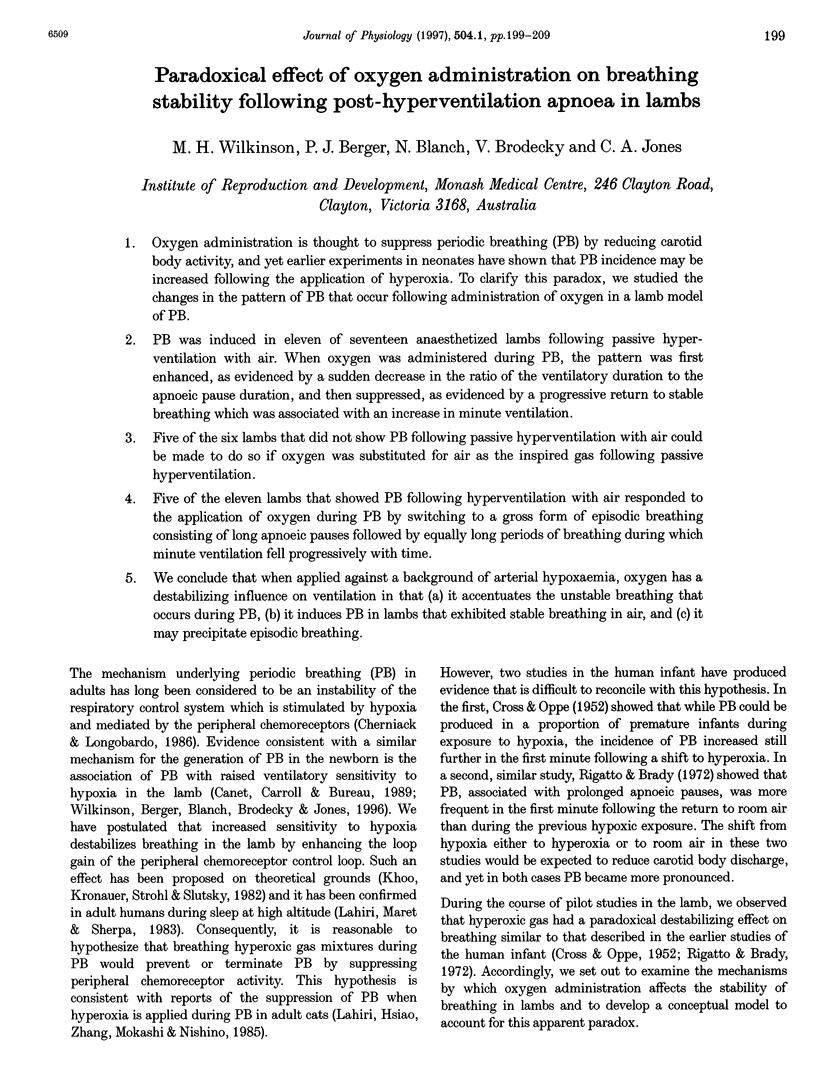
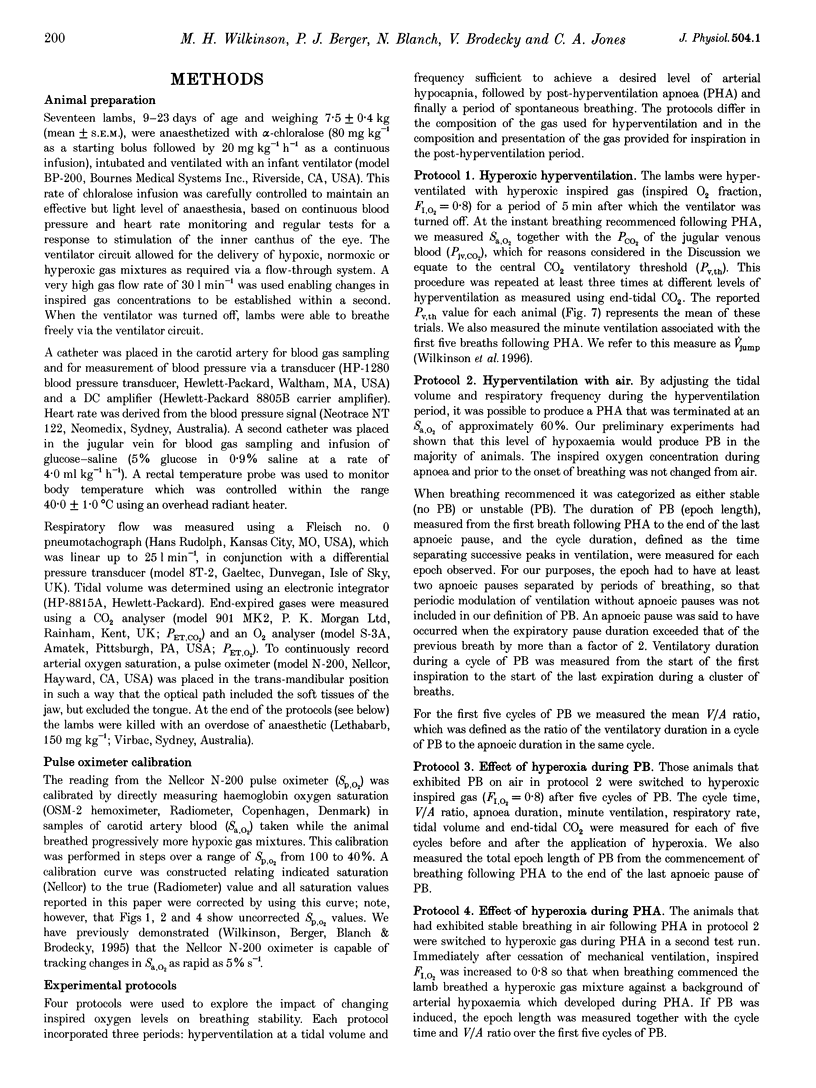
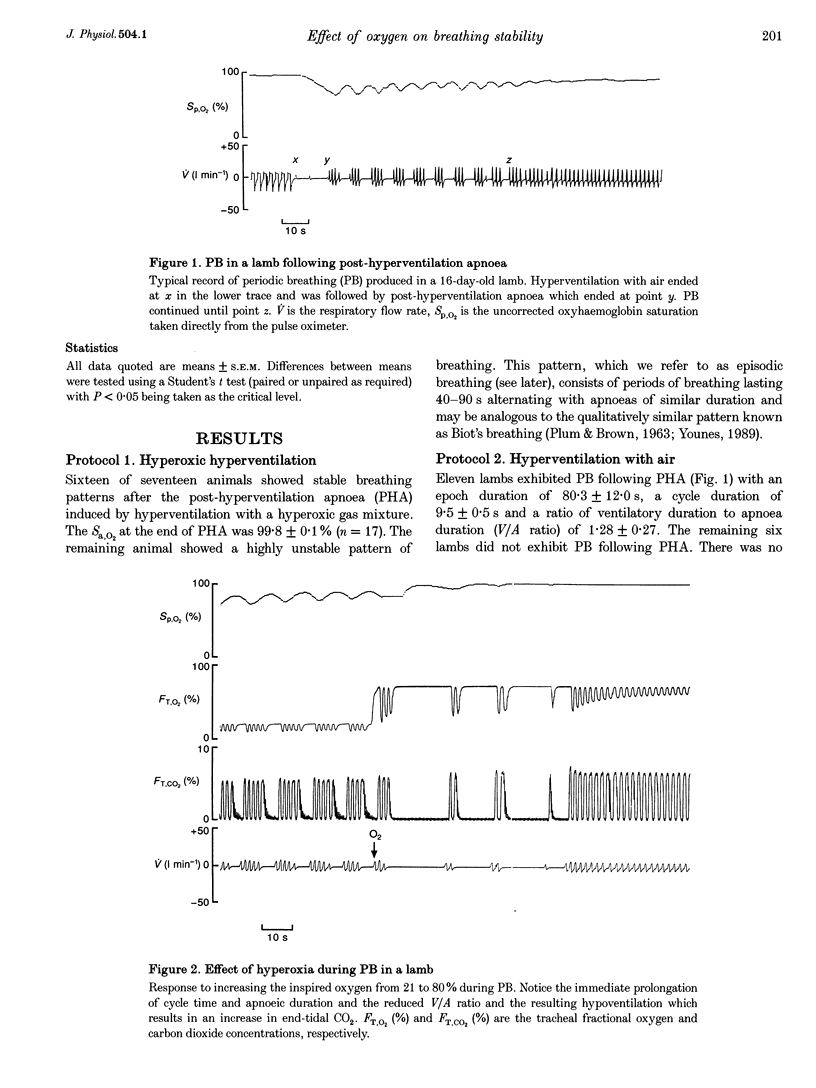
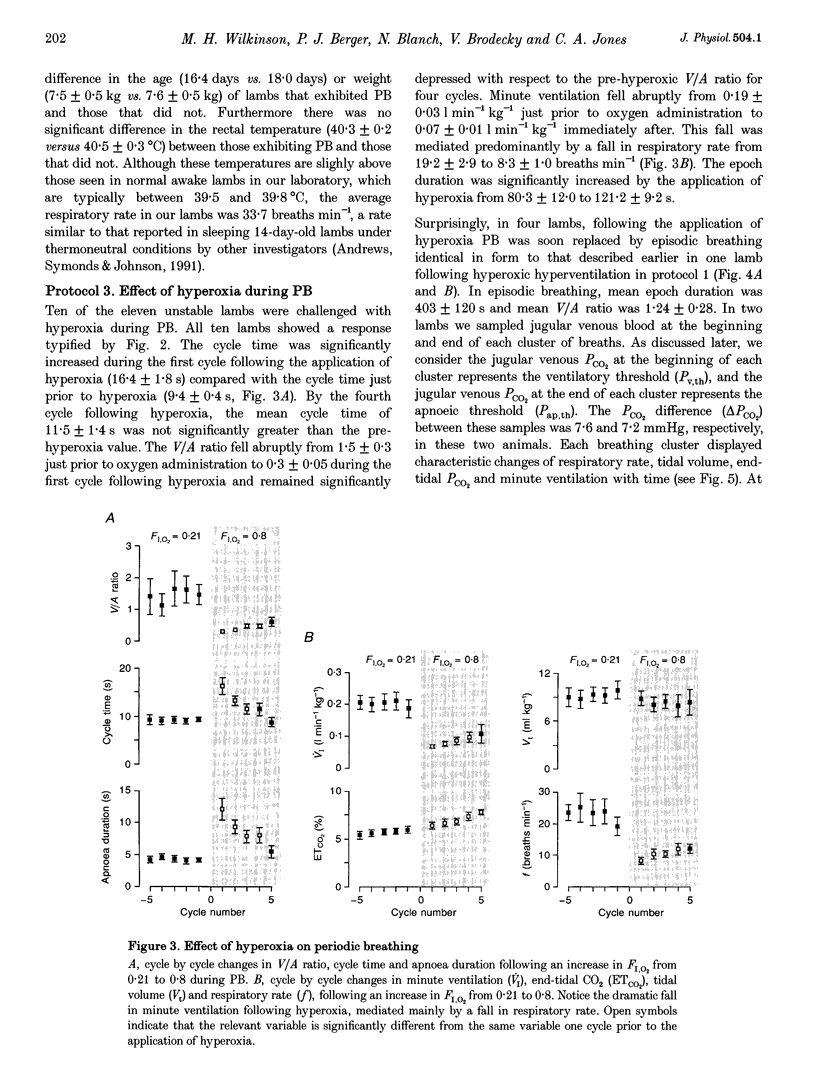

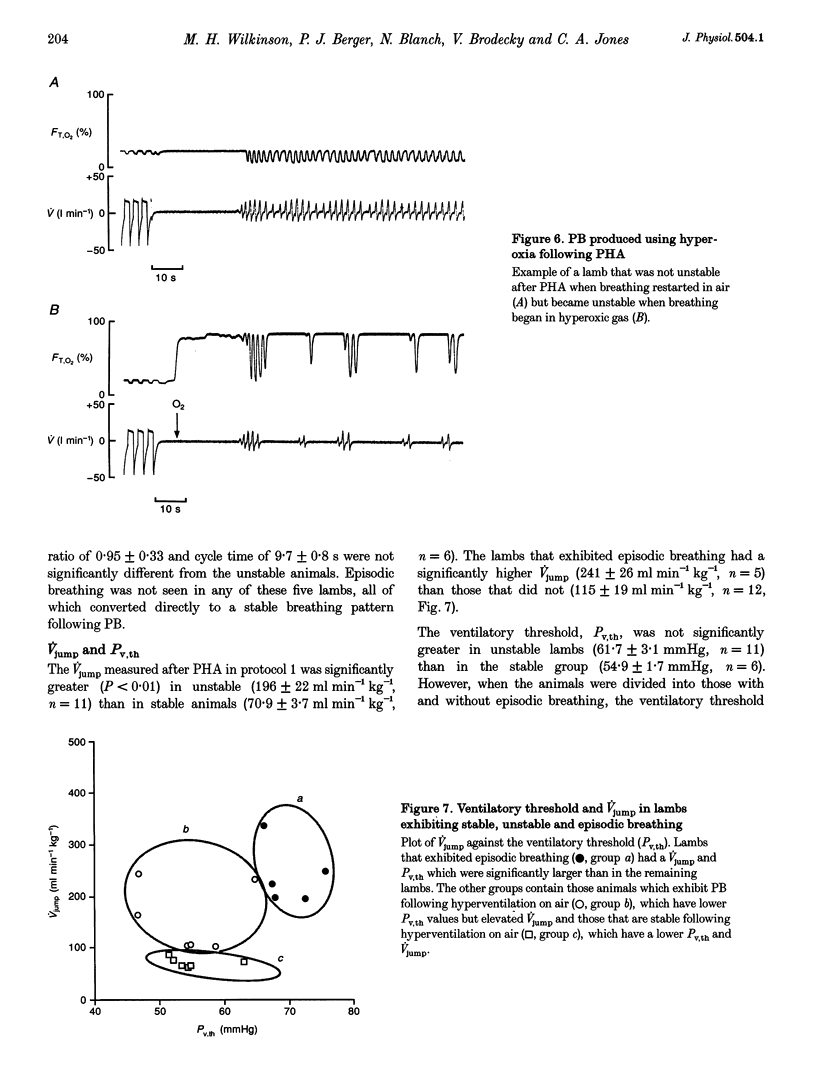
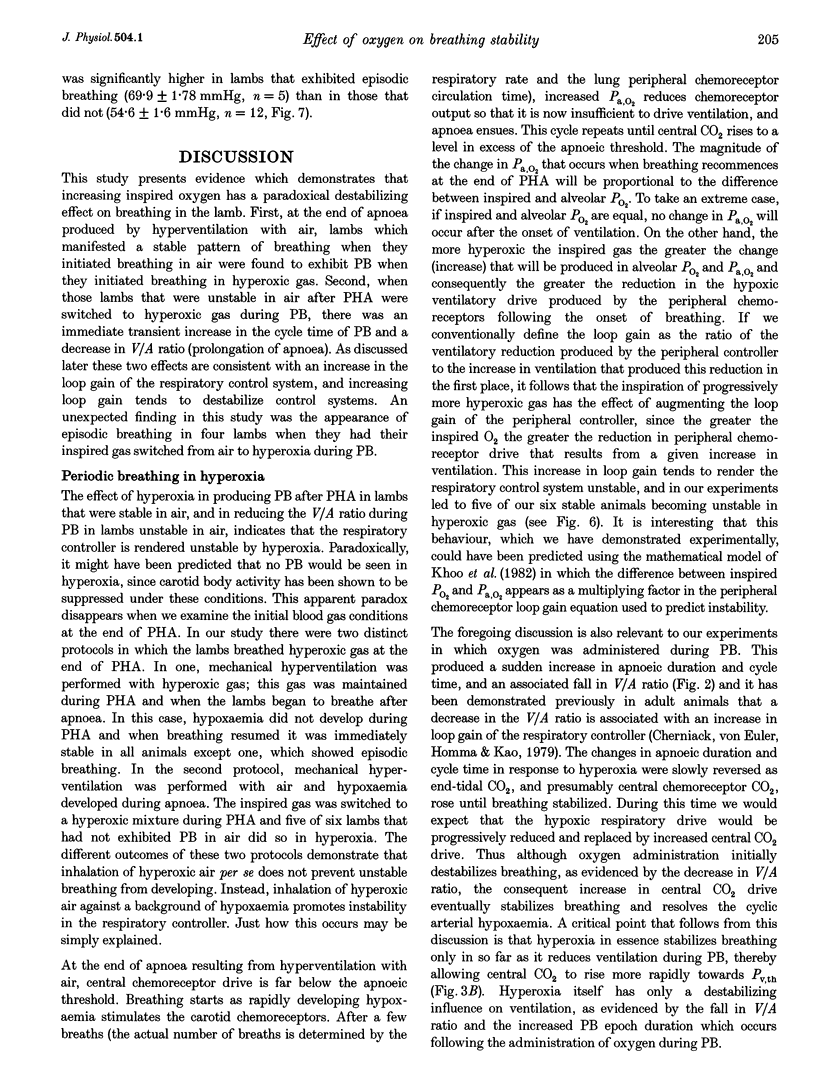

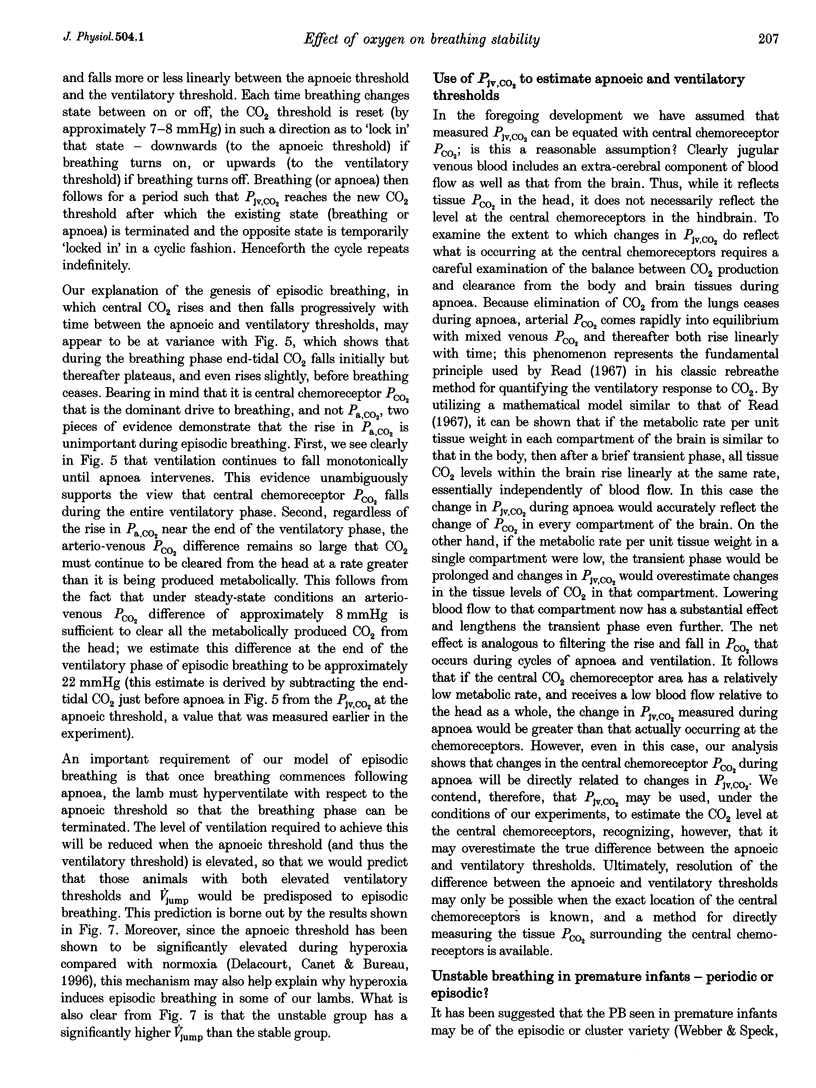
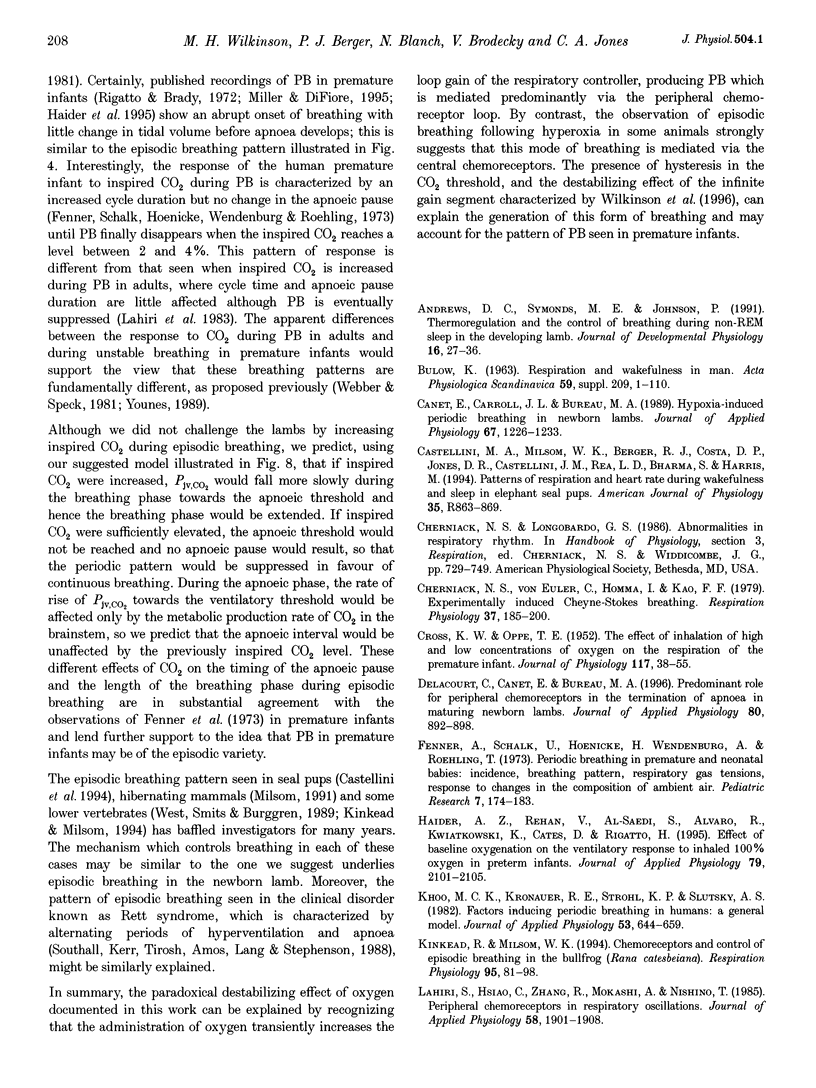
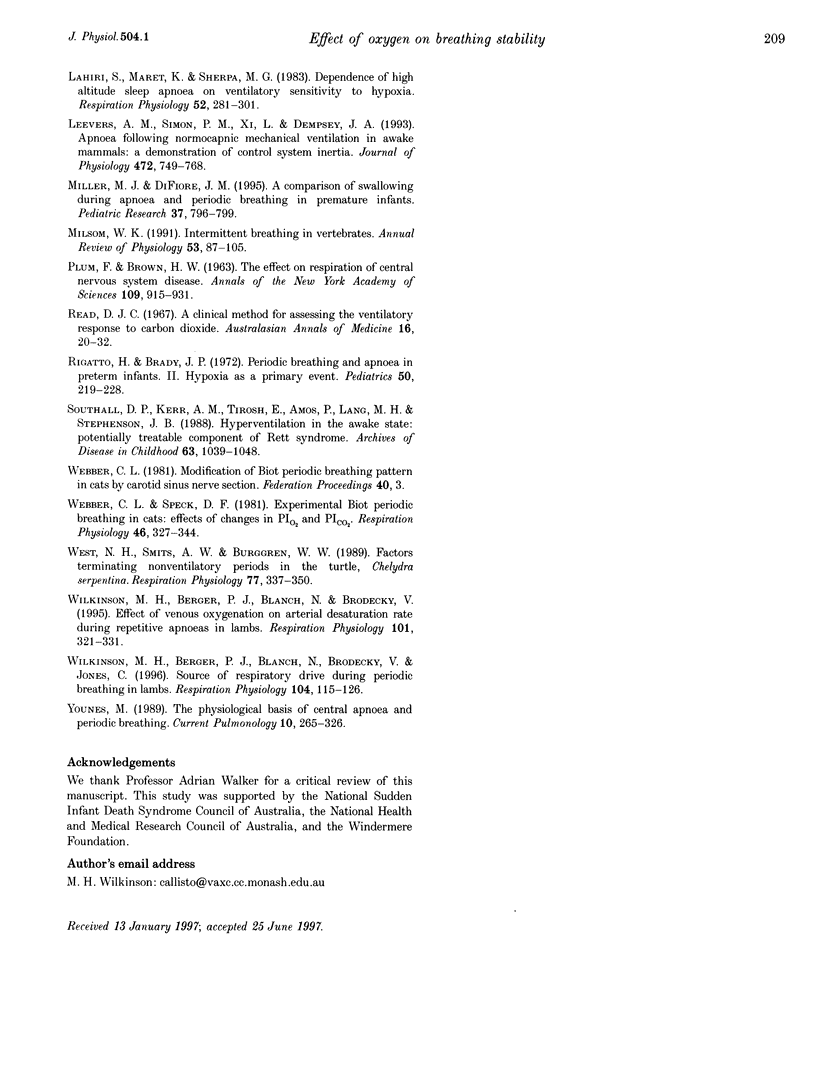
Images in this article
Selected References
These references are in PubMed. This may not be the complete list of references from this article.
- Andrews D. C., Symonds M. E., Johnson P. Thermoregulation and the control of breathing during non-REM sleep in the developing lamb. J Dev Physiol. 1991 Jul;16(1):27–36. [PubMed] [Google Scholar]
- BULOW K. Respiration and wakefulness in man. Acta Physiol Scand Suppl. 1963;209:1–110. [PubMed] [Google Scholar]
- CROSS K. W., OPPE T. E. The effect of inhalation of high and low concentrations of oxygen on the respiration of the premature infant. J Physiol. 1952 May;117(1):38–55. [PMC free article] [PubMed] [Google Scholar]
- Canet E., Carroll J. L., Bureau M. A. Hypoxia-induced periodic breathing in newborn lambs. J Appl Physiol (1985) 1989 Sep;67(3):1226–1233. doi: 10.1152/jappl.1989.67.3.1226. [DOI] [PubMed] [Google Scholar]
- Castellini M. A., Milsom W. K., Berger R. J., Costa D. P., Jones D. R., Castellini J. M., Rea L. D., Bharma S., Harris M. Patterns of respiration and heart rate during wakefulness and sleep in elephant seal pups. Am J Physiol. 1994 Mar;266(3 Pt 2):R863–R869. doi: 10.1152/ajpregu.1994.266.3.R863. [DOI] [PubMed] [Google Scholar]
- Cherniack N. S., von Euler C., Homma I., Kao F. F. Experimentally induced Cheyne-Stokes breathing. Respir Physiol. 1979 Jul;37(2):185–200. doi: 10.1016/0034-5687(79)90070-7. [DOI] [PubMed] [Google Scholar]
- Delacourt C., Canet E., Bureau M. A. Predominant role of peripheral chemoreceptors in the termination of apnea in maturing newborn lambs. J Appl Physiol (1985) 1996 Mar;80(3):892–898. doi: 10.1152/jappl.1996.80.3.892. [DOI] [PubMed] [Google Scholar]
- Fenner A., Schalk U., Hoenicke H., Wendenburg A., Roehling T. Periodic breathing in premature and neonatal babies: incidence, breathing pattern, respiratory gas tensions, response to changes in the composition of ambient air. Pediatr Res. 1973 Apr;7(4):174–183. doi: 10.1203/00006450-197304000-00020. [DOI] [PubMed] [Google Scholar]
- Haider A. Z., Rehan V., Al-Saedi S., Alvaro R., Kwiatkowski K., Cates D., Rigatto H. Effect of baseline oxygenation on the ventilatory response to inhaled 100% oxygen in preterm infants. J Appl Physiol (1985) 1995 Dec;79(6):2101–2105. doi: 10.1152/jappl.1995.79.6.2101. [DOI] [PubMed] [Google Scholar]
- Khoo M. C., Kronauer R. E., Strohl K. P., Slutsky A. S. Factors inducing periodic breathing in humans: a general model. J Appl Physiol Respir Environ Exerc Physiol. 1982 Sep;53(3):644–659. doi: 10.1152/jappl.1982.53.3.644. [DOI] [PubMed] [Google Scholar]
- Kinkead R., Milsom W. K. Chemoreceptors and control of episodic breathing in the bullfrog (Rana catesbeiana). Respir Physiol. 1994 Jan;95(1):81–98. doi: 10.1016/0034-5687(94)90049-3. [DOI] [PubMed] [Google Scholar]
- Lahiri S., Hsiao C., Zhang R., Mokashi A., Nishino T. Peripheral chemoreceptors in respiratory oscillations. J Appl Physiol (1985) 1985 Jun;58(6):1901–1908. doi: 10.1152/jappl.1985.58.6.1901. [DOI] [PubMed] [Google Scholar]
- Lahiri S., Maret K., Sherpa M. G. Dependence of high altitude sleep apnea on ventilatory sensitivity to hypoxia. Respir Physiol. 1983 Jun;52(3):281–301. doi: 10.1016/0034-5687(83)90086-5. [DOI] [PubMed] [Google Scholar]
- Leevers A. M., Simon P. M., Xi L., Dempsey J. A. Apnoea following normocapnic mechanical ventilation in awake mammals: a demonstration of control system inertia. J Physiol. 1993 Dec;472:749–768. doi: 10.1113/jphysiol.1993.sp019971. [DOI] [PMC free article] [PubMed] [Google Scholar]
- Miller M. J., DiFiore J. M. A comparison of swallowing during apnea and periodic breathing in premature infants. Pediatr Res. 1995 Jun;37(6):796–799. doi: 10.1203/00006450-199506000-00020. [DOI] [PubMed] [Google Scholar]
- Milsom W. K. Intermittent breathing in vertebrates. Annu Rev Physiol. 1991;53:87–105. doi: 10.1146/annurev.ph.53.030191.000511. [DOI] [PubMed] [Google Scholar]
- Read D. J. A clinical method for assessing the ventilatory response to carbon dioxide. Australas Ann Med. 1967 Feb;16(1):20–32. doi: 10.1111/imj.1967.16.1.20. [DOI] [PubMed] [Google Scholar]
- Rigatto H., Brady J. P. Periodic breathing and apnea in preterm infants. II. Hypoxia as a primary event. Pediatrics. 1972 Aug;50(2):219–228. [PubMed] [Google Scholar]
- Southall D. P., Kerr A. M., Tirosh E., Amos P., Lang M. H., Stephenson J. B. Hyperventilation in the awake state: potentially treatable component of Rett syndrome. Arch Dis Child. 1988 Sep;63(9):1039–1048. doi: 10.1136/adc.63.9.1039. [DOI] [PMC free article] [PubMed] [Google Scholar]
- Webber C. L., Jr, Speck D. F. Experimental Biot periodic breathing in cats: effects of changes in PiO2 and PiCO2. Respir Physiol. 1981 Dec;46(3):327–344. doi: 10.1016/0034-5687(81)90130-4. [DOI] [PubMed] [Google Scholar]
- West N. H., Smits A. W., Burggren W. W. Factors terminating nonventilatory periods in the turtle, Chelydra serpentina. Respir Physiol. 1989 Sep;77(3):337–349. doi: 10.1016/0034-5687(89)90121-7. [DOI] [PubMed] [Google Scholar]
- Wilkinson M. H., Berger P. J., Blanch N., Brodecky V. Effect of venous oxygenation on arterial desaturation rate during repetitive apneas in lambs. Respir Physiol. 1995 Sep;101(3):321–331. doi: 10.1016/0034-5687(95)00034-b. [DOI] [PubMed] [Google Scholar]
- Wilkinson M. H., Berger P. J., Blanch N., Brodecky V., Jones C. Source of respiratory drive during periodic breathing in lambs. Respir Physiol. 1996 Jul;104(2-3):115–126. doi: 10.1016/0034-5687(96)00024-2. [DOI] [PubMed] [Google Scholar]



